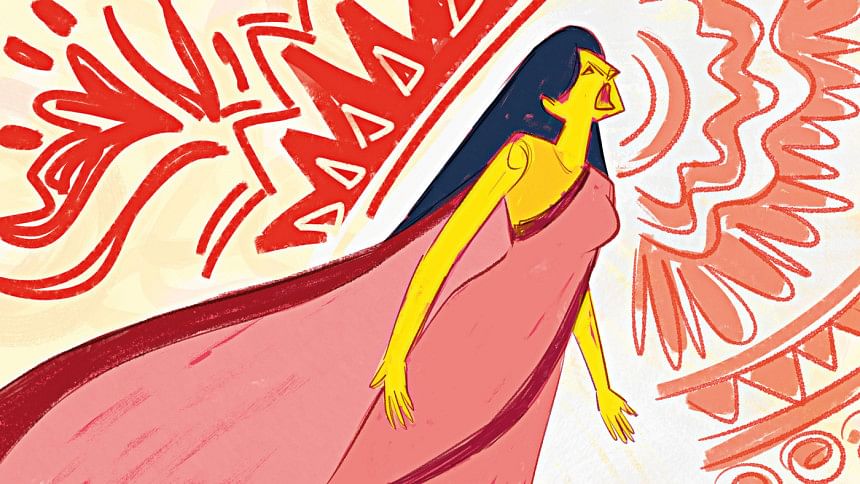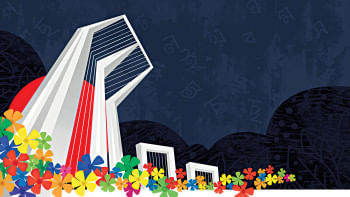Women’s embodied voice in the Bengali ‘folk’ archive

As women, lower-caste people and Muslims in colonial Bengal were moving into the public space and institutions in the early 20th century, the effect was also being felt in the literary-archival discussions about the Bengali past. The doyen of Bengali literary archiving was Dinesh Chandra Sen, whose benignly aggressive labour with a set of collaborators greatly helped undermine the hegemonic caste-sect-gender nexus of the Bhadralok nationalist group from within.
One key intervention in this regard was the publication of a set of love ballads from Mymensingh, collected and transcribed by Chandrakumar De and edited for publication in Bangla and English by Sen in 1923. Ever since, the ballads have been a topic for heated debate. A number of scholars took them to be fake-lores created by Chandra Kumar De with the collusion of Dinesh Chandra Sen. Indeed, one can take issues with much of Sen's interpretation of the facticity and origin of the ballads.
Dinesh interprets the ballads broadly as cultural survivals against the behemoth of Aryanisation. For example, one poem mentions Khorasan along with Delhi and Lahore as parts of the Indic ecumene. Sen takes it as a surviving memory of the hoary past when Khorasan was part of India. It would be easier to read this allusion in the context of late Mughal relevance of Khorasan as the gateway of Central Asia and Iran.
Sen's heart—or his broader discursive concern—was probably in the right place. His pursuit to unearth a simpler, heroic age of pre-brahminical, pre-patriarchal Hindu society found women exercising a much stronger agency. In his interpretation, the mediaeval kavya was essentially a brahminical editing and bowdlerisation of the prebrahminical past. The overall horizon of "Bhadraloki" autopoiesis hinged on a certain textualist reconstitution of a pure Hindi past based on a particular archive amplified by colonial printing, education, law, and so forth.
This autopoiesis was undercut by the shift towards oral archivation spearheaded by Sen. In Sen's version of Bengal's past, it is the Sena Brahminism that set Bengal on the path of devolution, further reinforced by the brahminical nomothetic figures like Raghunandana, who contributed to rigidisation of caste, patriarchal confinement of women, and a hapless conservatism that stifled the spirit away from the outside: whether as mercantile voyages or encounter with nature. Sen's bid was to recover an affective community of the post-casteist Hindu, while including the patriotic vernacular Muslims, the modern Bengali woman, and the untouchables, and mobilising an archive was integral to this process.
Against those who cast aspersions on the authenticity of the Mymensingh ballads, indologist Dusan Zbavitel convincingly argued that these can be accepted as popular creations that fit the bill of ballads. Modern scholars say that ballads tend to be characterised by no-frills narrative economy, textual instability due to oral re-creativity, the lack of projection of the author or narrator as these were probably not meant to be financially remunerated performances, and so on.
Of course, the ballads included in the 1923 volume were by no means homogeneous. The sundry collection include memorially transmitted legendary narratives, fairy tales, hagiographies of actual people, and romances.
Whatever the ballads might have represented to De or Sen, what did they mean to the people who created, narrated or listened to them? I would argue that the ballads were literary confabulations around a broad overall concern: the social circulation of women governed by the parameters kinship, identity, and wealth, and how women's libidinal subjectivity would engineer flights from this axis through socio-spatial outsides.
The stories are set in the frontier region of Mymensingh, adjacent to mountains, jungles and rivers inhabited by non-sedentary communities that could strategically make use of the dense, complex ecology of the region against social governance by the hegemonic caste-class nexus or by the feudal notables representing the Mughal or colonial extractive apparatus. In such a context, the ballads are focused on how the socio-spatial outside would open an avenue of agency for women while making it impossible to equate women to donable objects in the marital economy.
The social equations that objectify women's jouban are destabilised because of this outside: the forest, the wilderness, the riverside, and so on. A woman could pursue her desire for the beloved by crossing over to that socio-spatial outside. Even well within the rural community perimeters, fetching water opened a space of freedom, challenge and fear to women where they could have an encounter with benign or malign otherness and wilderness.
Another outside was constituted by the hanging extractive apparatus of the state. The feudal and jural apparatus of the Dewans and Qazis is shown as necessarily predatory, in contrast to the more idyllic type of the fairy tale kings. Thanks to the looming presence of that outside, women cannot be just given and taken by kinship groups as passive tokens of exchange. Instead, they are being invited by men to make a self-gift of their jouban. The socio-spatial outside thus gives women choices, and the logic of love portrayed in the ballads is a way of constituting women as subjects of truth, so that the fear and hopes of the choice space opened by the outside can be put to closure.
This is society putting women's will to test in a situation of marital exchange rationality, feudal predatory threats, seductions, and so forth. Given that women can choose, they must choose desire, even as this desire will lead them to death. And indeed, their pursuit of desire more often than not will lead them to death. When they practise their agency of self-gift, it usually ends in tragedy, which I would call a kind of premodern necrological fatalism. (One could find echoes of this fatalism in the famous ballads and romances of Persia or those from the Punjab-Sindh belt.)
Whether she gets married to her beloved, or whether she gives in to seduction, the autonomous amorous woman seems to be drawn to death. Moreover, the woman must sacrifice herself to keep her truth. Freedom as death is the fate designated for these women.
From a masculinist view, women as objects of desire pose dangers to men's preservation of vitality. Men of certain monastic orders for example saw the release of semen as relinquishment of life-force. Men either have to become renunciates or perpetuate their life force through male progeny. Women must support this self-preservation and self-reproduction of men.
Like Behula, we find Mahua, Kajalrekha and other women assigned the task of reviving their newly-wed husband. On the flipside, women's autonomous desire for men can lead them to death as well. It is usually the heroine's male relatives (father, brothers, uncle, clan, etc) rather than their lovers who usually step in to try to adjust the consequences of the woman's libidinal drives. This points towards a certain disarticulation of the marital unit. Women could fall in love and flee from their villages for their desire, but given social hostility towards women's autonomy, such pursuits would relegate them to muteness, where only nature would be the witness of their truth.
For Dinesh Chandra Sen, the recovery of the pre-brahminical—or what we would call off-brahminical—discourse was a key plank to enable the autopoiesis of the modern woman. Dinesh insightfully argues that premarital courtship was essential to institute the ideology of romantic love, but the ballads only showed the opening of such an agency, without its extrication from necrological fatalism.
Since their reception by the Bengali intelligentsia, there have been many adaptations of the ballads, ranging from songs by Mohiner Ghoraguli to Coke Studio Bangla. Even the wildly popular Bengali film Beder Meye Josna borrowed some plot elements from the ballads. But the movie and modern adaptations would often free women's libidinal agency from the necrological fatalism of premodernity. The ballads are thus ramified into a long post-history in modern Bengal.
Md Tahmidal Zami is a researcher and journalist.

 For all latest news, follow The Daily Star's Google News channel.
For all latest news, follow The Daily Star's Google News channel. 






Comments